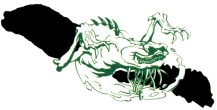


| CLASS I - These are undeveloped forms, insubstantial and difficult to see. Interaction with their environment is limited and enigmatic (I.E., Spectral lights, voices and sounds, Ectoplasmic vapors, etc.). Simple application of a proton pack beam is normally effective. |
| CLASS II - Manifestations focused in this time and space, Class II ghosts and up can physically manipulate things in this world. These forms are vague, inconsistent, or incomplete (I.E., Floating sheets, ghostly hands, animated lips, etc.). Although a proton pack beam is normally effective, some Class II ghosts have the capacity to return attacks. |

|

| CLASS III - Anonymous Hauntings. Distinct human form and personality is evident, but former identity (I.E., As a living being.) is not established. If established, ghost is reassigned as Class IV. Often difficult to deal with, Class III ghosts generally possess sophisticated means of defense. |
| CLASS IV - Identity is established. They have a distinct human form and personality with known identity, such as General Custer or Cleopatra. Economic disposal methods include research into the background of said entity, as well as possible communication with it. |

|

| CLASS V - These are Ectoplasmic manifestations of definite but non-human form. Speculation includes the theory that Class V's are formed from emotionally-charged events or as side effects from ritual summonings (Slimer was a by-product of the rituals that a cult held in the Sedgewick Hotel's basement.). These typically require extensive proton pack implementation to eradicate. |
| CLASS VI - Ghosts from lower life forms. A giant penguin was once seen attacking a mugger in Central Park. Later it was discovered that the penguin was a ghost. Unique solutions are often required to handle these entities, including research into habitats, allergies, natural enemies, etc. |

|

| CLASS VII - Metaspectres. Obsessively malevolent, exceptionally powerful, and exhibiting control over subordinate forms, such entities are potentially very dangerous. These are often identified by primitive cultures as "Demons". Entitles which fit this classification include Gozer and Zuul. Neutralizing them is usually a problematical undertaking at best. Most standard procedures are futile. The most realistic plan is to take measures to prevent these things from entering the sphere of influence in the first place. |
FREE FLOATING - A ghost that moves about at will, with no regard to buildings, people, or time and space, as we know it. Sometimes just called "free".
FOCUSED - The ghost is tied to the specific locale in which it first appeared and cannot stray from it.
FULL TORSO - Some ghosts have full torsos, some have arms and legs, and some have no head and the like. Full torso apparitions are relatively rare - many hauntings are indistinct below the chest.
REPEATER - May refer to a self-regenerating P.K.E. force (Common with ritually-summoned spooks.) or to a spook with obsessive repetitious behavior patterns (I.E., Always manifesting at a certain place and time). Even when the ghost can be captured or eliminated, some agency continues to produce successive hauntings. Such ghosts reappear periodically until the source can be disabled.
VAPOR OR MIST - A common but imprecise term, it may refer to a Class I or II entity, or any insubstantial haunting.
C/N While the "official" system only goes up to CLASS VII, it has been mentioned in The Unseen that there is such a class as CLASS XII, however it is believed that this is purely apocryptical due to the inaccuracies created in character histories due to uninformed writers.